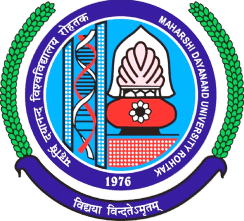
Ph.D in Environmental and Life Sciences: Admission Process, Eligibility Criteria, Duration, Course fees, Highlights, Syllabus, Subjects, FAQ.
Ph.D in Environmental and Life Sciences Overview:
- Research Focus: The core of a Ph.D. program involves conducting original research in a specialized area within environmental and life sciences. Students often work on projects related to conservation biology, ecology, biodiversity, environmental toxicology, climate change, sustainable development, biotechnology, genomics, or other specific fields.
- Interdisciplinary Approach: The program typically involves interdisciplinary coursework, allowing students to gain a comprehensive understanding of diverse subjects like environmental microbiology, ecological systems, molecular biology, bioinformatics, environmental policy, and more.
- Coursework: Depending on the program, students may have to complete a series of advanced courses that cover subjects like advanced biology, chemistry, statistics, environmental modeling, research methodologies, and specialized topics related to their research interests.
- Research Opportunities: Students engage in hands-on research under the guidance of faculty advisors. They design and conduct experiments, collect data, analyze findings, and contribute new knowledge to their field through a dissertation or thesis.
- Seminar Participation: Participation in seminars, workshops, and conferences is often encouraged. This allows students to present their research findings, receive feedback, network with peers and professionals, and stay updated with the latest advancements in their field.
- Teaching Experience: Some programs may offer teaching assistantships, providing students with the opportunity to gain teaching experience by assisting professors in undergraduate courses or labs.
- Collaborations: Collaborations with other departments, research institutions, or industry partners may be available, offering students a chance to work on interdisciplinary projects and gain diverse perspectives.
- Career Prospects: Graduates from Ph.D. programs in Environmental and Life Sciences pursue careers in academia, research institutions, government agencies, environmental consulting firms, biotechnology companies, non-profit organizations, and more. They might work as researchers, professors, policy analysts, conservation scientists, environmental consultants, or in various leadership roles.
Ph.D in Environmental and Life Sciences Eligibility:
- Educational Background: A master’s degree or equivalent in a relevant field such as environmental science, biology, ecology, biochemistry, genetics, or a related discipline is usually required. In some cases, exceptional candidates with a strong bachelor’s degree and relevant research experience may be considered directly for a Ph.D. program.
- Academic Excellence: Candidates are expected to have a strong academic record, usually with a minimum GPA (Grade Point Average) requirement specified by the university or department.
- Standardized Tests: Many universities require applicants to submit scores from standardized tests like the GRE (Graduate Record Examination) or subject-specific GRE tests (e.g., GRE Biology, GRE Chemistry). However, some institutions have been moving away from requiring standardized tests as part of their application process.
- Letters of Recommendation: Applicants typically need to provide letters of recommendation from professors or professionals who can attest to their academic abilities, research potential, and suitability for a Ph.D. program.
- Statement of Purpose (SOP): A well-written statement of purpose outlining the candidate’s research interests, career goals, and reasons for pursuing a Ph.D. in Environmental and Life Sciences is usually required.
- Research Experience: Having prior research experience, either through internships, projects, or work in a research lab, can strengthen an applicant’s profile.
- English Proficiency: For international applicants, demonstrating proficiency in English is essential. This is often done through standardized tests like the TOEFL (Test of English as a Foreign Language) or IELTS (International English Language Testing System), unless the candidate’s previous education was conducted entirely in English.
- Interviews: Some programs might require an interview as part of the selection process to assess the candidate’s fit for the program and research interests.
Ph.D Environmental and Life Sciences Why to do?
- Advanced Expertise: A Ph.D. program provides an in-depth and specialized understanding of environmental and life sciences. It allows individuals to delve deeply into a specific area of interest, becoming experts in their field through rigorous research and study.
- Contribution to Knowledge: It offers the opportunity to contribute new knowledge to the scientific community. Doctoral research often involves conducting original investigations that can lead to discoveries, advancements, and solutions to complex environmental and biological challenges.
- Career Advancement: A Ph.D. can open doors to various career paths. Graduates may pursue roles in academia as professors or researchers, work in research institutions, governmental agencies, NGOs, or in the private sector (biotech, environmental consulting, pharmaceuticals, etc.). A doctorate can be a prerequisite for certain advanced positions and leadership roles.
- Impact and Sustainability: Many individuals pursue a Ph.D. in Environmental and Life Sciences because they are passionate about making a positive impact on the environment, biodiversity, conservation efforts, and sustainable development. This degree equips them with the knowledge and skills to address critical environmental issues facing the world today.
- Personal Development: The process of conducting original research and completing a Ph.D. can significantly enhance critical thinking, problem-solving skills, and the ability to work independently. It also fosters skills in project management, data analysis, and scientific communication.
- Networking and Collaboration: Ph.D. programs often involve collaborations with peers, professors, and professionals in the field, allowing for networking opportunities and exposure to diverse perspectives and ideas.
- Intellectual Challenge and Curiosity: For many, the pursuit of a Ph.D. is driven by a deep-seated curiosity and passion for advancing scientific knowledge. It provides a platform to explore complex scientific questions and push the boundaries of understanding.
- Personal Fulfillment: Completing a Ph.D. can be a fulfilling personal achievement, marking the culmination of years of hard work, dedication, and intellectual growth.
- The candidate must visit the official website of the college/university to download the application form. If the college follows an offline admission process, one must obtain the application form from the admission department.
- Now carefully read the form and fill in the details required such as name, birthdate, course type, specialization, academic qualification and much more.
- Attach/upload the documents required and submit them along with the application fees.
- Post the submission of the documents, the candidates will be informed about the merit list and seat allotment process.
Ph.D in Environmental and Life Sciences Highlights:
Aspect | Description |
Degree Type | Doctor of Philosophy (Ph.D.) in Environmental and Life Sciences |
Focus | Interdisciplinary study involving biology, ecology, genetics, environmental science, and more |
Research Emphasis | Original research contributing to environmental and life sciences knowledge |
Duration | Typically 4 to 6 years, varies based on research scope and individual progress |
Eligibility | Requires a relevant master’s degree or exceptional bachelor’s with strong research experience |
Coursework | Interdisciplinary courses in advanced biology, chemistry, statistics, environmental modeling, etc. |
Research Work | Hands-on research, data collection, analysis, and thesis/dissertation writing |
Career Options | Academia, research institutions, government, NGOs, biotech, environmental consulting, leadership roles |
Skills Developed | Critical thinking, problem-solving, research, data analysis, project management, scientific communication |
Opportunities | Networking, collaborations, seminar participation, teaching assistantships |
Personal Fulfillment | Intellectual challenge, personal growth, and contribution to scientific knowledge |
Ph.D in Environmental and Life Sciences Admission Process:
- Research Program Selection: Identify and select universities or institutions offering Ph.D. programs in Environmental and Life Sciences that align with your research interests and career goals.
- Review Eligibility Requirements: Check the specific eligibility criteria and admission requirements for each program. These often include a relevant master’s degree, academic records, standardized test scores (such as GRE or subject-specific GRE), letters of recommendation, statement of purpose (SOP), and English proficiency test scores (for international applicants).
- Contact Potential Advisors: Reach out to faculty members or potential research advisors whose work aligns with your interests. Discuss your research ideas, demonstrate your enthusiasm, and inquire about potential openings in their research groups. Establishing a connection with a faculty member can be beneficial during the admission process.
- Application Submission: Complete and submit the application form provided by the university or institution. Submit required documents, including academic transcripts, standardized test scores, letters of recommendation, SOP, and any other specified materials by the application deadline.
- Standardized Tests: If required, take standardized tests such as the GRE (Graduate Record Examination) or subject-specific GRE tests. Some institutions might waive these requirements or have them as optional.
- Letters of Recommendation: Request letters of recommendation from professors or professionals who can attest to your academic abilities, research potential, and suitability for a Ph.D. program in Environmental and Life Sciences.
- Statement of Purpose (SOP): Write a compelling SOP outlining your research interests, career goals, motivations for pursuing a Ph.D., and how the program aligns with your aspirations.
- English Proficiency Test: International applicants whose primary language is not English may need to provide TOEFL or IELTS scores to demonstrate proficiency in English.
- Interview (if required): Some programs may require interviews as part of the selection process. This may be conducted in person or via video conferencing to assess the applicant’s fit for the program and research interests.
- Admission Decision: After reviewing applications, the university’s admission committee evaluates candidates based on academic achievements, research experience, test scores, recommendation letters, SOP, and other relevant factors. Successful candidates receive admission offers.
- Acceptance and Enrollment: Upon receiving admission offers, accepted candidates must confirm their acceptance by the specified deadline and complete enrollment procedures, including submitting necessary documentation and paying any required fees.
Ph.D in Environmental and Life Sciences Top Colleges for the course:
- Indian Institute of Science (IISc), Bangalore
- Jawaharlal Nehru University (JNU), New Delhi
- Tata Institute of Fundamental Research (TIFR), Mumbai
- National Centre for Biological Sciences (NCBS), Bangalore
- Indian Institute of Technology (IIT) Bombay
- Indian Institute of Technology (IIT) Delhi
- University of Delhi
- Indian Institute of Technology (IIT) Madras
- Indian Agricultural Research Institute (IARI), New Delhi
- National Institute of Oceanography (NIO), Goa
Ph.D in Environmental and Life Sciences Syllabus:
- Core Courses:
- Advanced Biology: Molecular Biology, Cell Biology, Genetics, Ecology
- Advanced Chemistry: Environmental Chemistry, Biochemistry, Organic Chemistry
- Statistics and Research Methodologies
- Environmental Microbiology
- Evolutionary Biology
- Environmental Toxicology
- Ecosystems and Biodiversity
- Specialized Elective Courses:
- Genomics and Proteomics
- Environmental Policy and Regulations
- Biotechnology Applications in Environmental Sciences
- Climate Change and Adaptation
- Conservation Biology
- Aquatic Ecology or Terrestrial Ecology
- Bioinformatics and Computational Biology
- Research Seminars and Workshops:
- Participation in research seminars, workshops, and journal clubs to discuss ongoing research, recent publications, and advancements in the field.
- Independent Research Work:
- Conducting independent research under the guidance of a faculty advisor or research supervisor.
- Literature Review: Reviewing existing literature related to the research area.
- Proposal Development: Formulating and presenting a research proposal.
- Data Collection and Analysis: Conducting experiments, collecting data, and analyzing findings using appropriate methodologies.
- Thesis/Dissertation Writing: Documenting research findings and conclusions in a thesis or dissertation.
- Teaching Assistantship (if applicable):
- Some programs might offer teaching assistantships, providing experience in assisting with undergraduate courses, labs, or tutorials.
- Interdisciplinary Collaborations:
- Opportunities for interdisciplinary collaborations with other departments or institutions working on related fields such as environmental engineering, public health, social sciences, etc.
Ph.D in Environmental and Life Sciences FAQ Answer with Question:
Question: What is the typical duration of a Ph.D. program in Environmental and Life Sciences?
- Answer: The duration generally ranges from 4 to 6 years, depending on the research scope, individual progress, and the specific requirements of the program.
Question: What are the potential career paths after completing a Ph.D. in Environmental and Life Sciences?
- Answer: Graduates can pursue careers in academia as professors or researchers, work in research institutions, government agencies, NGOs, biotechnology firms, environmental consulting, or leadership roles in various sectors related to environmental and life sciences.
Question: What are the eligibility criteria for admission to a Ph.D. program in this field?
- Answer: Applicants typically need a relevant master’s degree, a strong academic record, letters of recommendation, standardized test scores (if required), a statement of purpose, and research experience. Some programs might consider exceptional candidates with a strong bachelor’s degree and research background.
Question: What does the research focus entail in a Ph.D. program in Environmental and Life Sciences?
- Answer: The research focus involves conducting original investigations contributing to environmental and life sciences knowledge. Areas may include conservation biology, ecology, biodiversity, environmental toxicology, climate change, sustainable development, and more.
Question: Can international students apply for Ph.D. programs in Environmental and Life Sciences in India?
- Answer: Yes, international students can apply. They typically need to fulfill the same eligibility criteria as domestic students and demonstrate proficiency in English through standardized tests like TOEFL or IELTS, unless their previous education was entirely conducted in English.
Question: What skills are developed during a Ph.D. in Environmental and Life Sciences?
- Answer: Students develop critical thinking, problem-solving, research methodology, data analysis, project management, scientific communication, and interdisciplinary collaboration skills.
Question: What is the significance of conducting original research in a Ph.D. program?
- Answer: Original research contributes new knowledge to the scientific community, addresses pressing environmental challenges, and fosters intellectual growth by exploring complex scientific questions.
Question: Are there opportunities for collaboration and networking during a Ph.D. program?
- Answer: Yes, students often have opportunities to collaborate with peers, faculty, and professionals through seminars, conferences, workshops, and interdisciplinary projects, fostering networking and exposure to diverse perspectives.

















